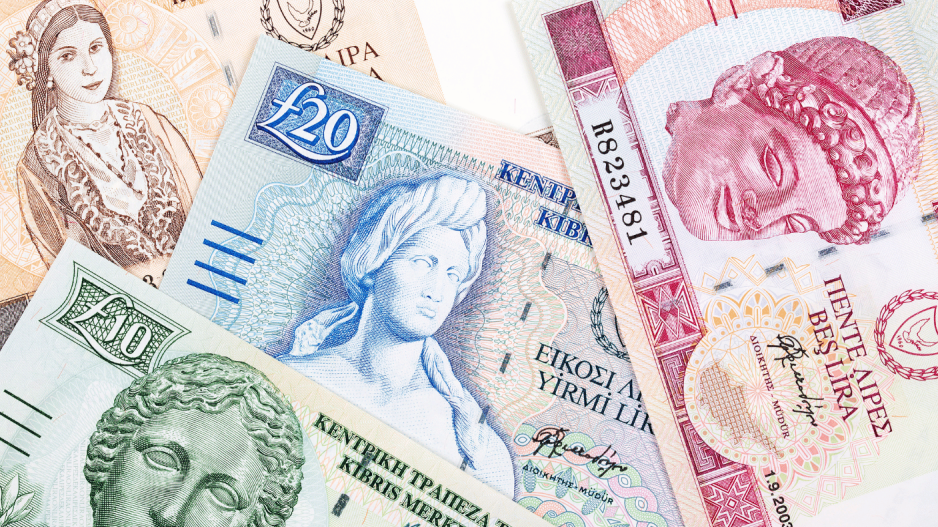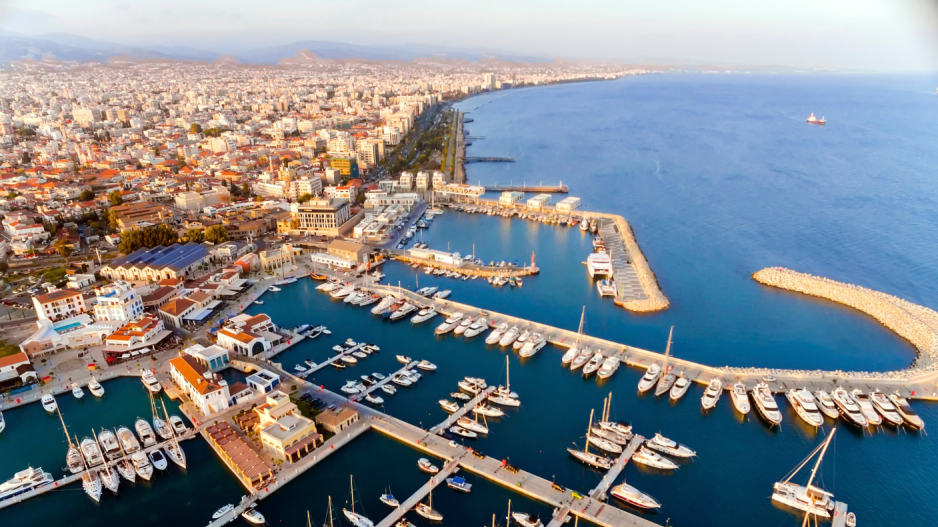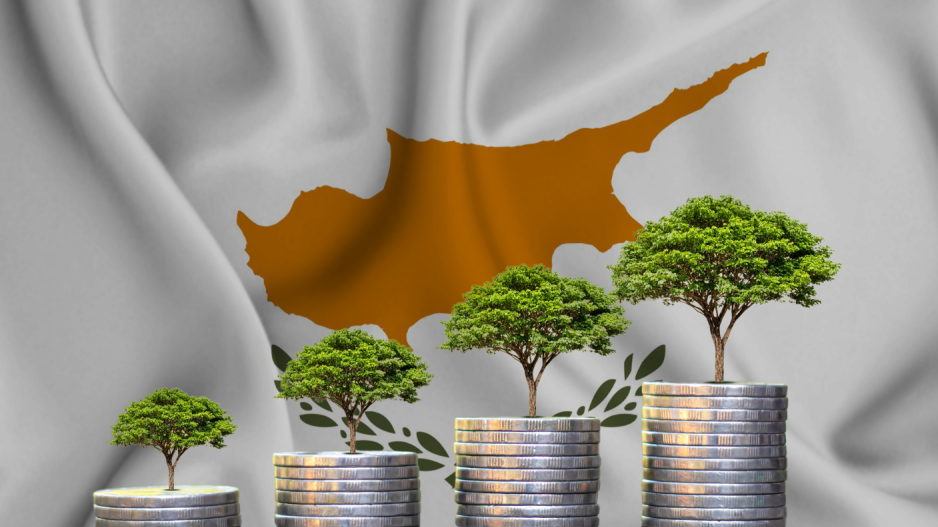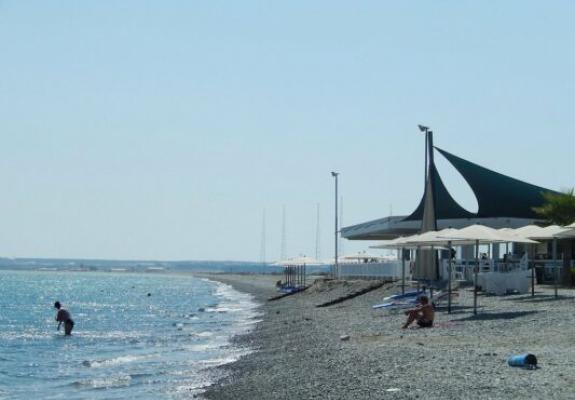The Evolution of Cyprus’ Economy Across 5 Decades
Cyprus, to many, is the ideal vacation and retirement destination. From its green-top mountains, to its luscious golden beaches, the island has attracted many to enjoy its seasons and hospitality. Going beyond its geography and topography, Cyprus has played a critical role in the region’s trade and business endeavors.
To reach its current standing as a key business hub in the Mediterranean, the island’s economy has shifted dramatically. Since the 1980’s, Cyprus transitioned from an agricultural and mineral exports economy, to one that is service-based with a strong emphasis on tourism and financial services.
Today, the services sector remains dominant, and simultaneously, we are seeing the information and technology (ICT) sector gradually rising to prominence. While the main components of Cyprus’ economy changed over the past 5 decades, its reliance on foreign investment and good foreign relations has remained a constant factor.
During the past decade alone, Cyprus has endured several economic downturns. The global financial crisis in 2008 and bail-in in 2013 led Cyprus’s GDP to a contraction of 6.6 percent. However, it has seen a great recovery 10 years on. According to statistics from the World Bank, the island’s economy has recovered from a contraction of 6.6 percent in GDP in 2013, to a 5.6 percent growth in GDP in 2022.
Developments in Cyprus’ sectors including real estate, construction, ICT, tourism, and the (CIP) have all contributed to the island’s economic recovery in recent years. More recently, the Covid-19 pandemic coupled with the sanctions imposed on Russia have created warranted concerns for the future of the island’s economy.
Let’s take a quick journey through the Cypriot Economy over the past five decades.
1980’s
To better understand the journey of the island’s economy, it is important to observe how it started since gaining its independence in 1960. An immense effort was made to ensure employability and access to wage-earning jobs in the late 1970’s. As Cyprus was recovering from a tumultuous crisis incurred by Turkey’s invasion in 1974, the island’s population worked hard to establish governance and economic direction.
Transitioning into the decade of the 80’s, Cyprus began cultivating economic activity with Arab countries with which it had good relations. As found in a book published by the Central Bank of Cyprus titled The Cyprus Economy: Historical Review, Prospects, Challenges, “the main impetus to domestic activity, however, stemmed from the unexpectedly strong foreign demand for industrial products, especially from Arab countries.”
Cyprus, at the time, was exporting goods including clothing, potatoes, cement, citrus fruits, wines, and cigarettes. To keep up with exporting goods, many Cypriots were employed in the manufacturing sector, which made up nearly 40 percent of the labor market in the 1980’s.

Stepping into the new decade, Cyprus’ tourism industry was booming. A study conducted by John Kaminarides, Chris Mavris, and Manolis Tsiritakis in 1995, indicated a threefold increase in tourist arrivals from 1980 (403,420) to 1989 (1.4 million). However, as Cyprus set its sights on further nurturing its relationship with the EU, its economy started to decline as the island began to adjust to a new economic direction, aligning with the European Union.
1990’s - The Economic Catalyst
Cyprus’ first steps to joining the EU were marked in 1972, by an association agreement, and were taken to the next step in the summer of 1990, with an application for a full membership to the European Union, as documented by the European Parliament.
This decade also marked the rapid decline of the manufacturing sector which once contributed 18 percent to Cyprus’ GDP. As observed in data from the World Bank, the sector contributed 14 percent to the island’s GDP in 1990, and saw a sharp decline to 8 percent by 1999.
Another sector which took a hit in the 1990’s was that of construction. As highlighted by the International Monetary Fund, “investment activity in this sector dropped in 1993, in part reflecting the slump in tourism, as well as tougher enforcement restrictions on new hotel construction.”
At the same time, the island was struggling with an alarmingly high debt to GDP ratio, as it was moving from an agricultural and goods exports based economy, to a more robust tourism and services strategy. In 1991, Cyprus’ debt to GDP ratio was at 96.4 percent, and only started to decline at a slow rate in 1994, at 91.8 percent. A study by Glenn P. Jenkins and George G. Poufos in 2002 indicates that “the main outcome of the fiscal changes undertaken during this period was to reduce the size of the public sector deficit”.
The 1990’s were a decade of economic contraction as a result of reconstructing the country to give rise to different sectors, and preparing to become an EU member state.
2000’s
Just over a decade after its application to the EU, Cyprus became a member in 2004. This period marked the liberalization of Cyprus’ interest rates, price controls, and investment restrictions. As this propagated an inflow of foreign direct investment to Cyprus, the island started seeing its economy shift towards services, and set greater focus on tourism in tandem.

However, since its accession to the EU, the island was required to contribute to the EU’s economy, which wedged its budget into a deficit. A report on the island’s macroeconomics by the European Commission highlighted, “this shift is mainly due to Cyprus changing from net receiver of EU funds during the years 2004-2007 to a net contributor to the EU budget, i.e., payments by the Cyprus government to the EU are higher than EU transfers to Cyprus.”
An additional, much more favorable result of Cyprus’ accession to the EU, was the growth of the shipping sector. The Central Bank of Cyprus discussed in a report that becoming a member of the EU “opened up new horizons for Cyprus’ shipping and secured the country’s competitiveness in sea transport. Moreover, a number of tax and economic advantages, such as the upgraded Shipping Taxation System, which is considered one of the most competitive tax systems for shipping companies in the EU” set Cyprus’ maritime industry for success in the coming years.
The latter half of 2008 brought the global market crash incurred by the USA’s housing market crash. The European Commission highlighted that “the crisis reached Cyprus through the decline in international demand, especially for tourist services… The initial shocks in the tourist and construction sectors spread to other areas of the economy and unemployment rose broadly.” Their analysis also noted that “real GDP growth turned from 5.1 and 3.6 percent in 2007 and 2008 respectively to -1.7 percent in 2009.”
Entering the EU, Cyprus was met with several economic growth factors across sectors, despite it being necessitated to contribute to the EU budget. Cyprus’ shipping sector began to flourish as a result of joining the EU, setting the sector up for success in coming years. The impact of the global market crisis gradually reached Cyprus, though with not as much impact compared to other countries such as France.
2010’s
Coming into the new decade, Cyprus’ banking and tourism sectors started picking up pace. Cyprus’ Ministry of Finance published a report in 2010, highlighting economic activity. It indicated that Cyprus’ GDP rose slowly, at a rate of 0.6 percent. The fact that it was rising in financially and economically turbulent times is an achievement in itself. “The improvement in economic growth, compared to previous quarters, is due, primarily, to the positive growth rates that the banking and services sectors continue to have.”
The observed growth rates were shockingly cut in 2013. Cyprus’ banking sector suffered severely through not only its reliance on Greece’s banks, but its failed management of non-performing loans (NPLs) among two major banks. This activity induced a bail-in, and imposed strict taxes on citizens. Cyprus ultimately turned to international lenders for a bailout amounting to €10 billion.
In the latter part of the decade the government turned its attention to a CIP, which initiated an inflow of foreign investments. This program triggered a period of growth for the economy. Immigrant Invest, a consultancy which aids individuals gain citizenship through investment programs, highlighted that foreign investment in real estate amounted to 60 percent of the total investments through the program. A total of €6.4 billion was injected into the Cypriot economy.
As foreign investment increased, especially between 2015-2020, most likely a result of the CIP, so did the construction industry. A report from the European Commission indicates that “the volume index of production in the broad construction sector increased by 88.7 percent over the 2015-2020 period. This was mainly driven by an increase in the index of production in the construction of buildings (+144.6 percent) and construction of civil engineering (+5.1 percent) over the same period.”
This economic activity paved the way for the 2020 decade. Not only did it push for growth in real estate and construction, but incited a rapid growth of foreign businesses to relocate to Cyprus, bringing fresh talent, competition, knowledge, and networks. This growth, however, stagnated as the new decade rolled out.
2020’s
Experiencing a pandemic at an unprecedented scale, Covid-19 struck Cyprus’ economy, which is heavily reliant on its tourism sector and suffered a 54.4 percent contraction in 2020. According to CYSTAT, the national statistical service, tourism hit an all-time-low in 2020, with less than 600,000 tourist arrivals, and less than €500 million generated from tourism. These were the lowest figures the island recorded since prior to the 2000’s.
One of the most influential sectors in Cyprus, the shipping sector, plummeted during the Covid-19 pandemic, with the economy suffering up to 5 percent loss due to the decreased activity in the maritime industry. However, it remains a key player in the maritime sector. As highlighted by the ICT Cyprus report of 2021, “around a quarter of global third-party ship management activities are controlled from Cyprus. The country boasts some 200 shipping and shipping-related companies, most of which are world-renowned in the industry.”
At the same time, the pandemic boosted the adoption of technologies by the public and private sectors alike, giving rise to the ICT sector. This growth has also received a push by the Cypriot government’s initiatives to support the sector with tax bills that enable much needed foreign talent to live and work in Cyprus; helping businesses acquire the skills they need. In effect, Cyprus has been recognized as a technology hub and the ICT sector in Cyprus grew 2.1 percent year on year (YoY) in 2020 to reach €692.10 million.
The economy started to realize strong growth momentum closer to the end of the fiscal year in 2022, as tourism “reached 80 percent of the 2019-levels. In addition, exports of business services increased significantly. On an annual basis, real GDP growth is estimated to have increased by 5.8 percent in 2022”, as noted by the European Commission’s findings.
Despite this growth, there were concerns regarding Cyprus’ most affluent business ally, Russia, after their invasion of Ukraine in early 2022. The flight bans, as part of the NATO imposed sanctions, were estimated to cost Cyprus 2 percent of its GDP in 2022, according to Ioanna Skaliotou’s findings.
These sanctions and restrictions pose further threats to the plethora of Russian owned businesses in Cyprus, as business owners and employees are not able to travel to Cyprus to perform their professional duties. Additionally, the sanctions limit any further investments made, raising concerns of the continuity of Russian affluence and influence in Cyprus.

Dionysis Dionyssiou, Head of the Management Unit at the Ministry of Finance, shared with FastForward that, “In the next decade, trends are expected to be continued and the Cyprus economy will record robust growth rates. Growth will be mainly driven by tourism, shipping, information and communication (the ICT sector), financial and other business services, health, education and manufacturing.
The economy is evolving. The Cyprus growth model has changed towards higher value-added sectors in the services sector, mostly, and in manufacturing, partly. In the 80s, Cyprus mainly exported goods, while, nowadays, it mainly exports services.
What the Government can do is to enhance the exports of products (both in goods and services) that have or can have further potential. One of them is to support light manufacturing, enhance its tourist product by attracting more and/or higher spending tourists from existing and new markets.
We don’t see Cyprus’ economy becoming independent, but perhaps becoming more selective. The business model has changed and it's also a small, open economy with the lending being solely done via the banking sector due to lack of a secondary market.
Domestic investments are limited and not enough in order to make big projects or a significant amount that are needed in order to grow further. Local investors can go up to a point but foreign investment done in the right way and in cooperation with local investors can create real potential, new jobs and benefit the economy as a whole.”
Looking ahead, Cyprus has several opportunities to further diversify its economy. Renewable and sustainable energy, as well as headquartering, align to create a possible future for Cyprus’ economy. The EurAsia Interconnector, for example, is paving the way for Cyprus to establish lasting relationships with neighboring countries in a united effort to reach sustainable energy goals proposed by the EU’s Green Deal.
This activity highlights improved connectivity to the region for Cyprus, as well as improved economic competitiveness. Cyprus’ efforts during Covid-19, as well as its favorable geographic location and competitive tax rates, proved a bright future for headquartering; providing ideal environments for foreign businesses to continue relocating to Cyprus.
Over the past 5 decades, Cyprus has adapted to global economic turmoil, and navigated its way into a rising position in the digital transformation and sustainability efforts regionally and globally. From exporting goods in the 1980’s to neighboring Arab countries, to strong economic contractions in the 1990’s, to joining the EU early in the 2000’s and giving rise to its shipping sector, the island had undergone a plethora of transitions and changes in just those three decades.
More recently, the 2010’s brought a sharp downturn in the island’s economy with the bail-in and recession in 2013. However, Cyprus showed quick recovery with its CIP, which placed further prominence on the island’s services and construction sector.
Finally, what we have seen in the early stages of the 2020’s, Cyprus’ efforts in recovering from the global pandemic gave way to the rise of the ICT sector, being increasingly funded by both the public and private sectors. To give some perspective on the rise of the ICT sector, Marios Giorgoudis, General Manager at TechIsland, stated that ICT contributes 12 percent of Cyprus’ GDP, which exceeds that of shipping.
While the island’s agricultural produce is a sweet nectar still sought by tourists and neighboring countries alike, the reskilling of the island, and its specialization in financial and legal services, have slowly but surely transformed Cyprus into a potential regional business and technology hub.






